It’s no surprise that our 2019 year-end trip, like the previous two years, took us back to Asia – we ventured to South Korea and the Philippines. Our good friend Chloe (aka Seung Eun) happened to be seeing her parents in Korea, so we thought visiting Seoul with a local tour guide would be a fun way to kick off our trip. We’ll be sharing more about our experience in Seoul soon!
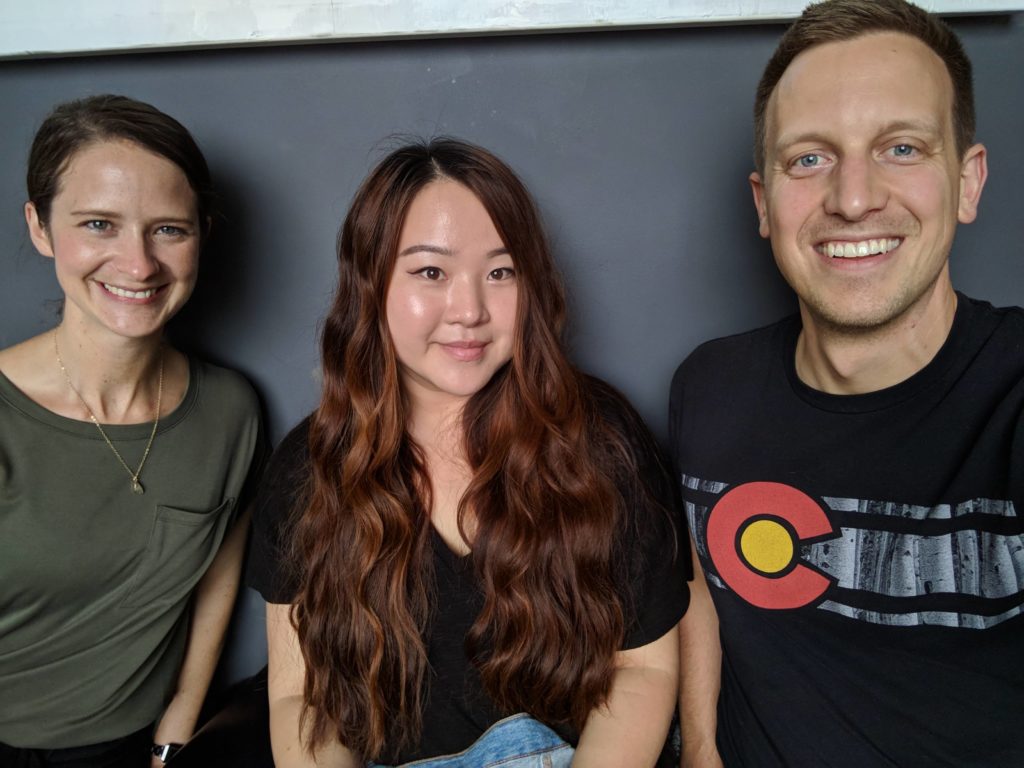
The main activity of the trip was scuba diving, and we picked the Philippines after hearing so many great things from fellow divers. And although Chloe doesn’t dive, she decided to join us to round out the last bit of her trip. We decided to make a short and sweet stop at our entry point, Cebu City, with just under 24 hours to explore.
Cebu City
We ventured into Cebu City to check out some of the area’s rich history and to get a general sense of the bustling city. Fort San Pedro was initially built by the Spanish in the 17th century and is now a museum that can be visited for the small price of 30 PHP / $0.50. Cebu played an important role in Spanish Colonial history. Explorer Ferdinand Magellan was the first westerner to set foot on the Philippines in 1521, planting Magellan’s cross in Cebu City and converting most of the local chiefs to Christianity. One chief named Lapu-Lapu, however, did not obey his orders leading to a conflict. The Battle of Mactan resulted in a victory by the natives over the Spanish forces, and Magellan was killed by a poisoned arrow.
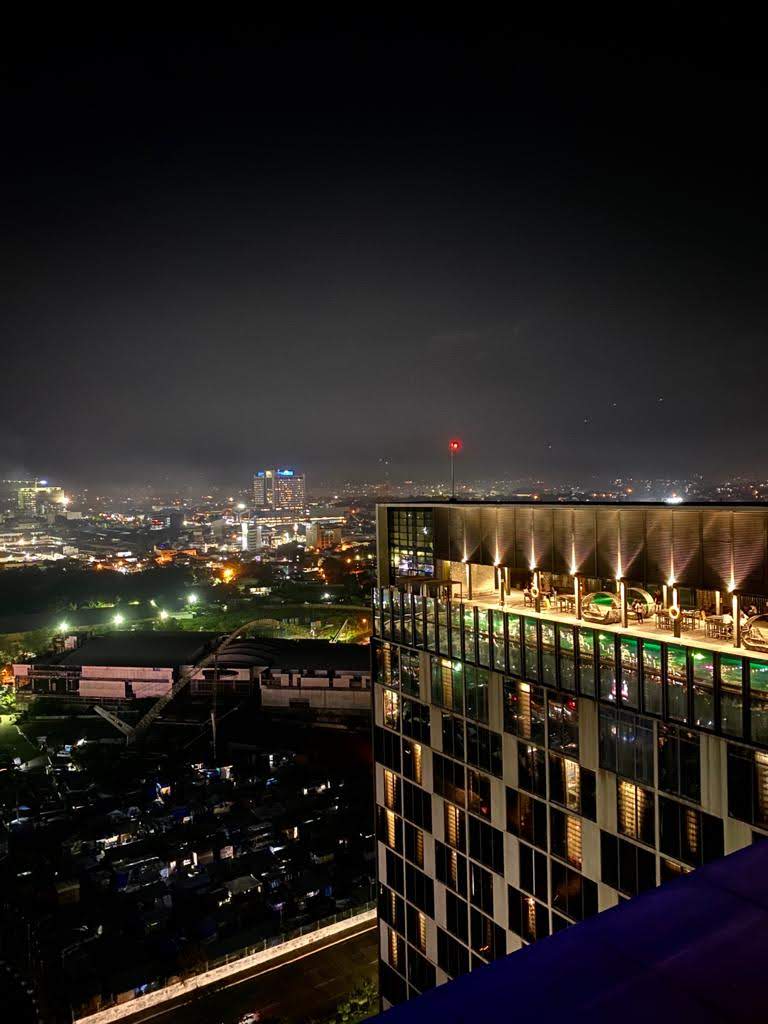
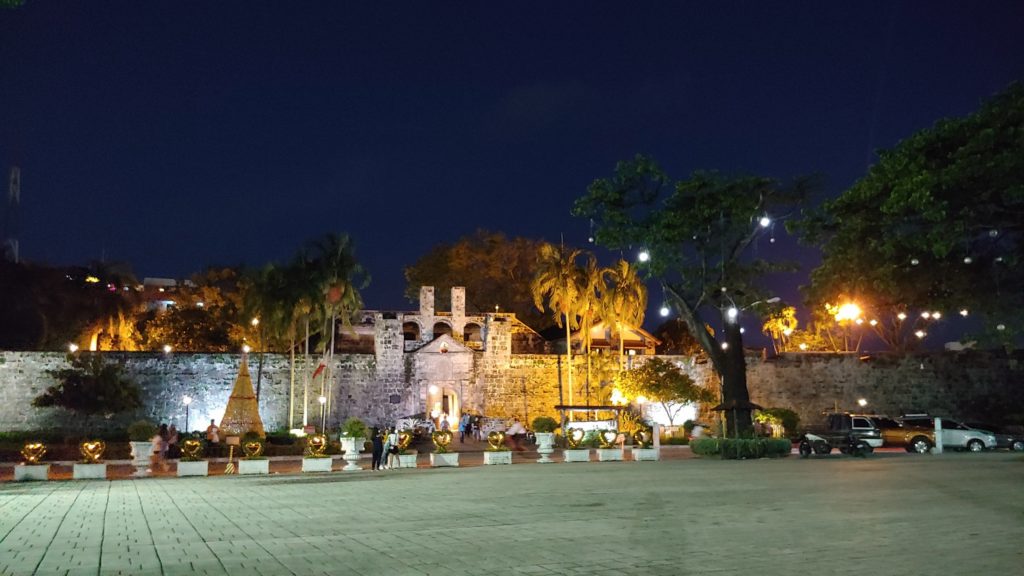
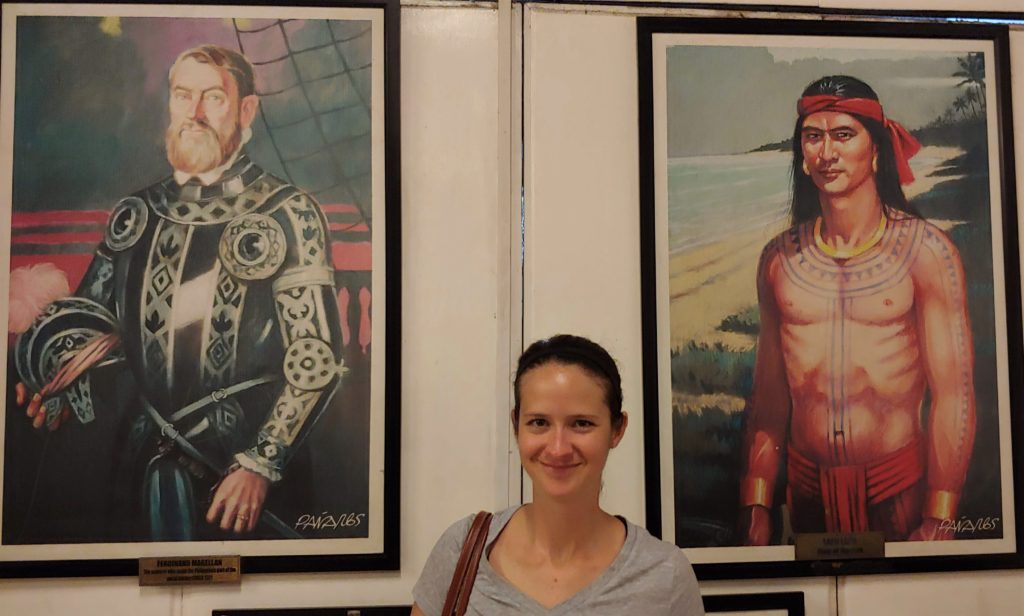
Over the course of our travels, we’ve come across memorials dedicated to Magellan at his voyage’s starting point near Sevilla, Spain, in the Strait of Magellan, linking the Atlantic and Pacific oceans in Chile, and now the place of his death in the Philippines.
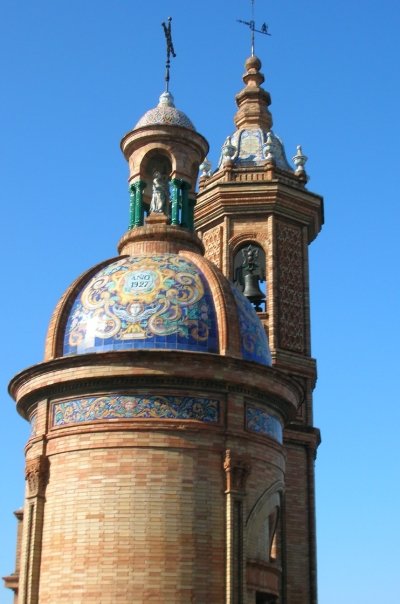
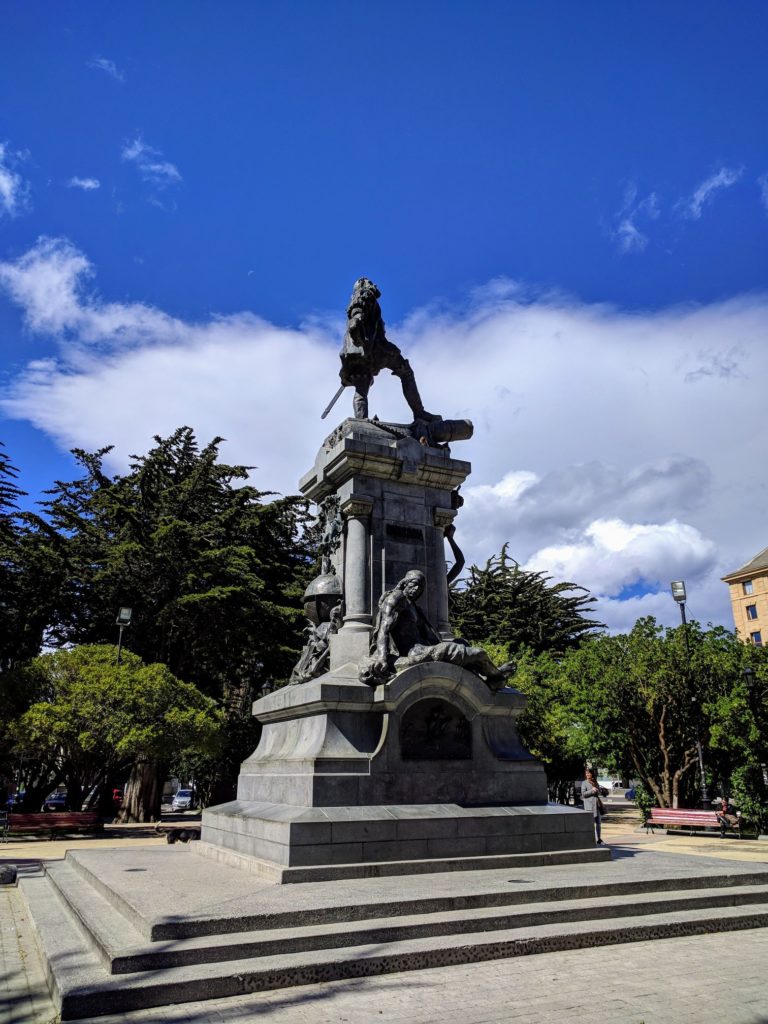
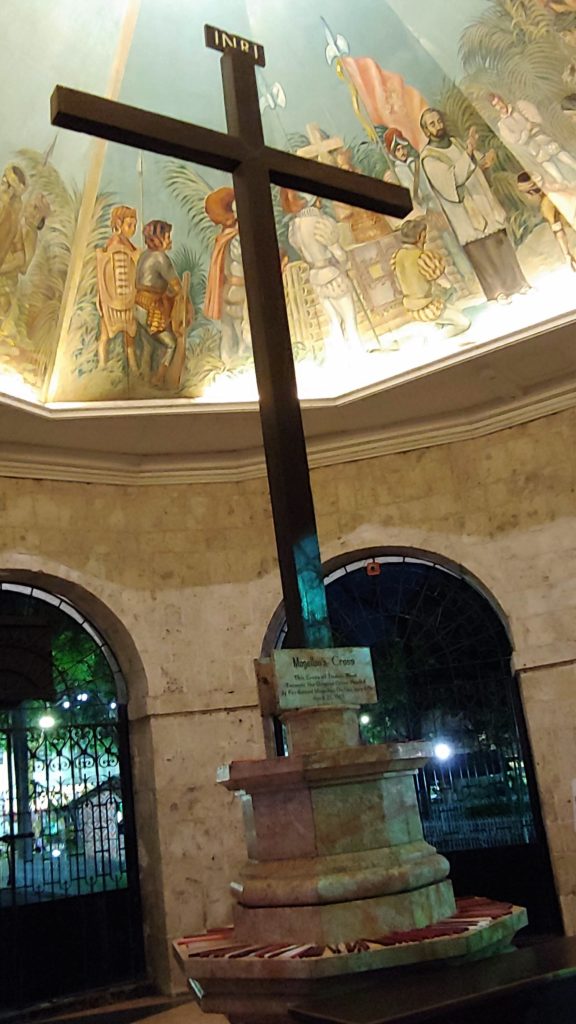
While it was fun going into Cebu City, we weren’t visiting the Philippines for the city life. After having just visited Seoul, we were ready to relax and explore the beachside towns and underwater world for which the country is known. Our next stops would take us to Moalboal and Dumaguete which, unless you’re a big diver or adventure seeker, aren’t widely known like the bigger resort names of Boracay and Palawan.
The bus ride over the hills in Cebu’s interior was an adventure in and of itself. For the duration of the ride, the streets were packed with mini buses, around half the width of a regular bus and with bench style seating (plus standing room on the bumper), and mopeds with sidecars. The problem with the latter is that they’re powered the same as a regular moped, but packing half a dozen people, and therefore much heavier and slower. You can imagine how this, along with roosters, goats and dogs roaming freely, makes driving more challenging, especially traversing the hills. Both types of vehicles often had gratuitous graphics of the biblical variety, including phrases like “God Bless our Trip!” or images of the resurrection.
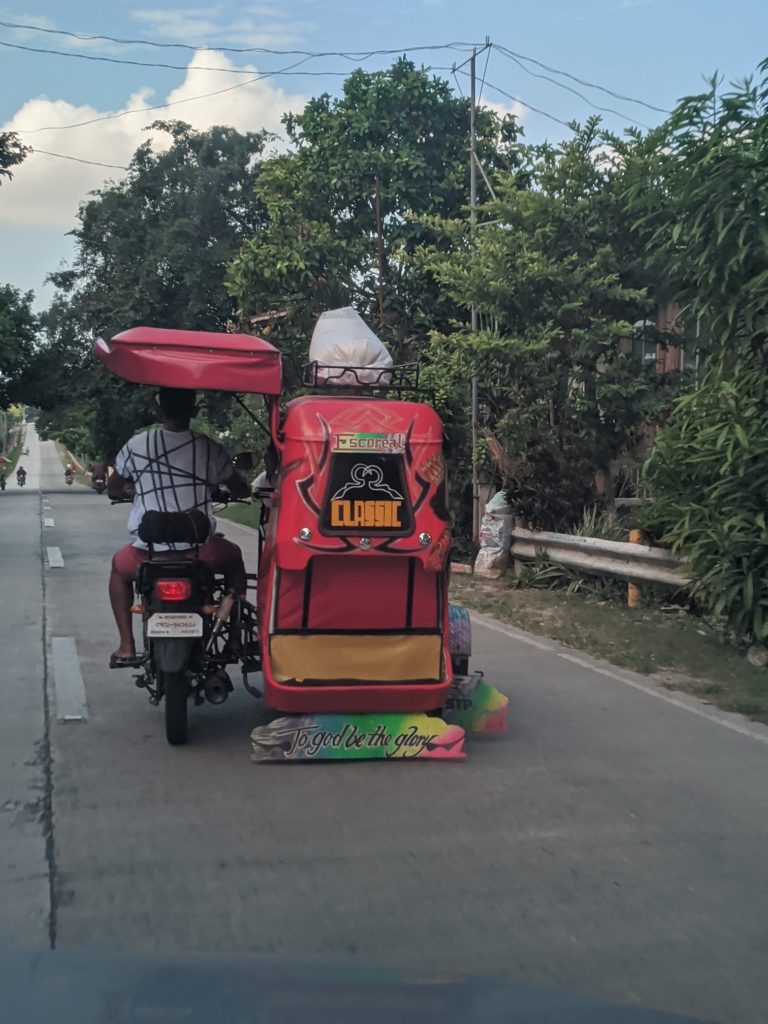
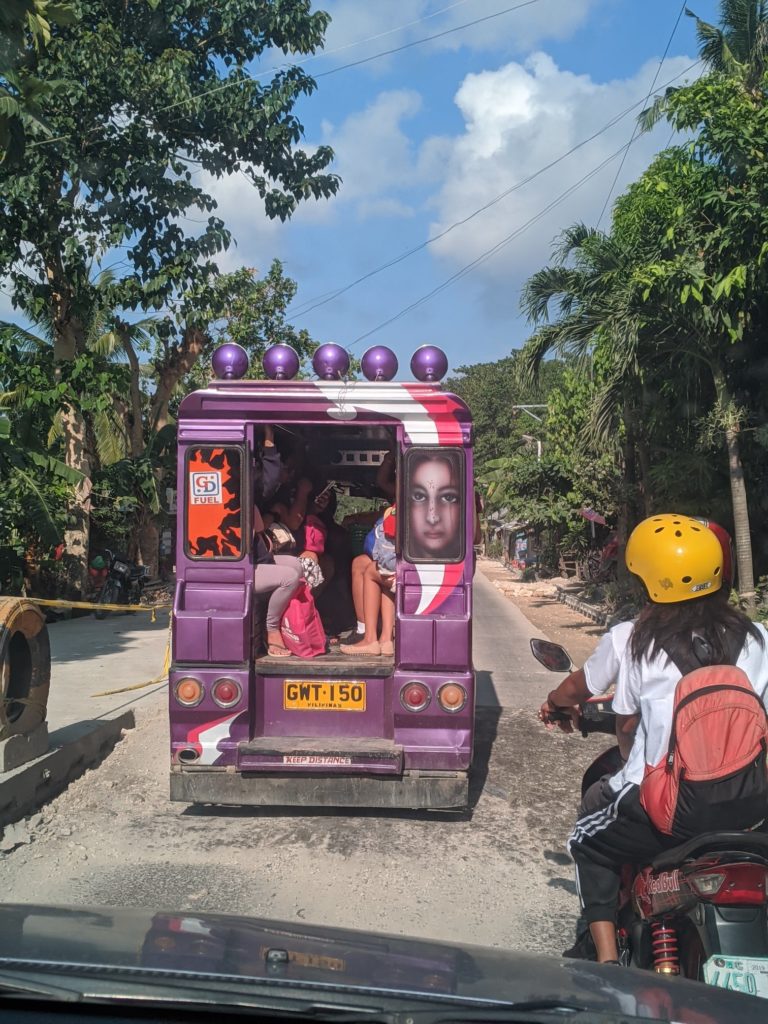
Moalboal
The town of Moalboal is situated along Cebu’s eastern coast, and the hills of neighboring island Negros Oriental are visible across the water in the distance. It isn’t known for fancy resorts but instead as a laid back dive and adventure hub where hostels, hotels, dive shops, massage parlors, bars and restaurants line the main narrow street along the waterfront.
And because this is Brico Adventures, we couldn’t visit the area without signing up for at least a couple adventures. The first activity on the docket in Moalboal was canyoneering — hiking, wading, swimming and jumping off cliffs into a deep canyon river. We weren’t quite sure what we signed up for after changing into swim attire and water shoes, being fitted with life jackets and helmets, and listening to a quick and somewhat questionable safety briefing that included a sales pitch for ziplining. We opted out of paying extra for ziplining, which we were told would save us from an hour long hike. It’s a good thing we’re a bit cheap (or frugal?), because it probably only saved 15-20 minutes of hiking, and the zip line didn’t look all that thrilling. We quickly descended down a slippery mud path, thanks to the rain forest drizzle, with stone stairs that led us into the canyon to the first cliff.
This was the first of several cliffs that ranged from a couple meters up to 12 meters in height, with bypass options for those who chose to opt out. There were areas in which we could slide down, and others that we had to swim or wade through. Luckily we were nearing the end of our 3 hour tour when one of the guides spotted a snake swimming through the river with us. But there was no need for concern – one of the participants from South Africa was a safari ranger in the famous Kruger park who quickly identified the snake and got it out of harm’s way (if found by other guides, they probably would have killed it). Compared to another canyoneering tour that we did in New Zealand, this one felt more authentic and less showy. Our only gripe was that Brittany got hungry about 2 hours in, with only overpriced food options along the way, and a little grumpy from her ears hurting from the jumps. The tour finished off with a nice meal of grilled veggies, salad, fish and beer.
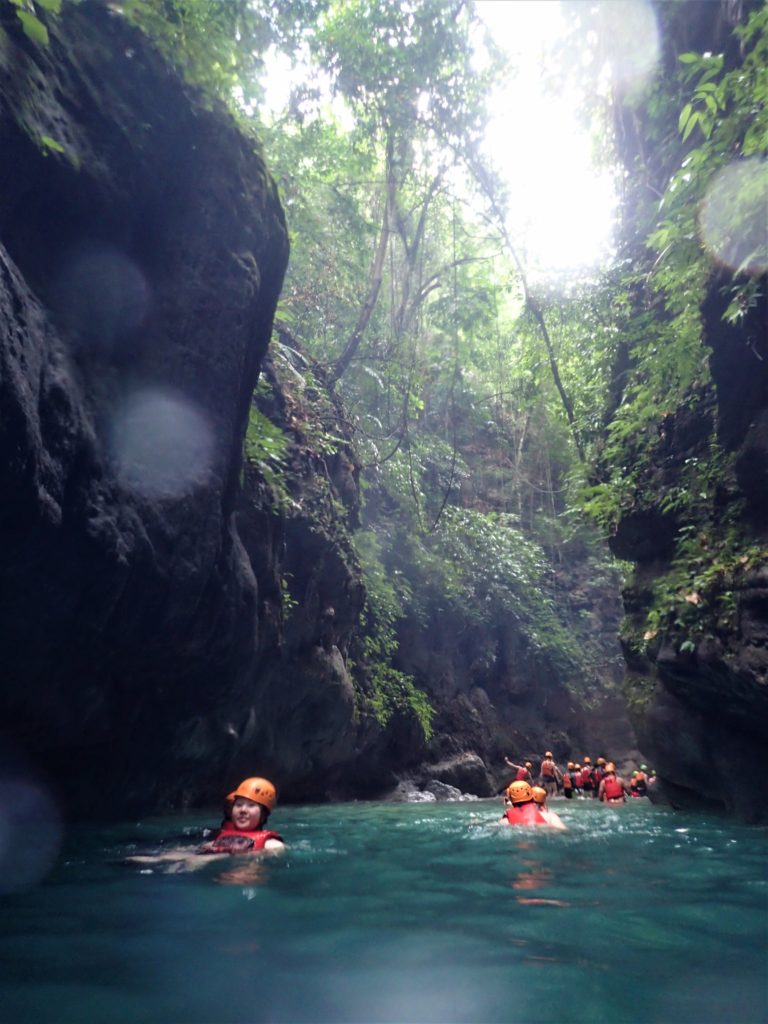
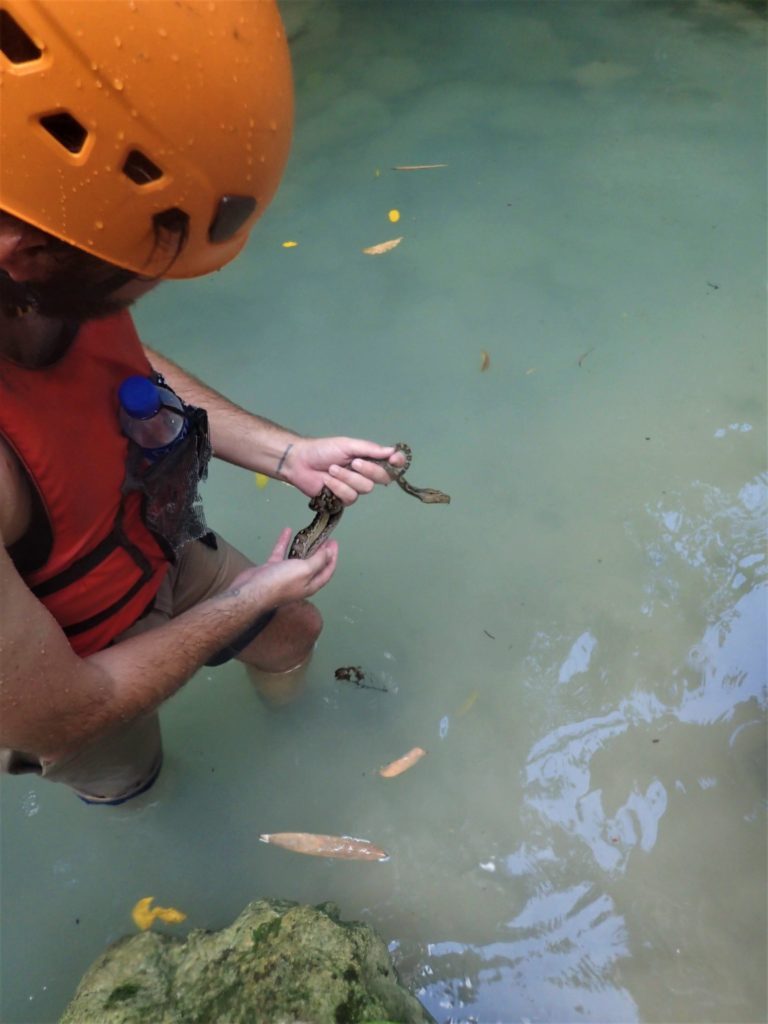
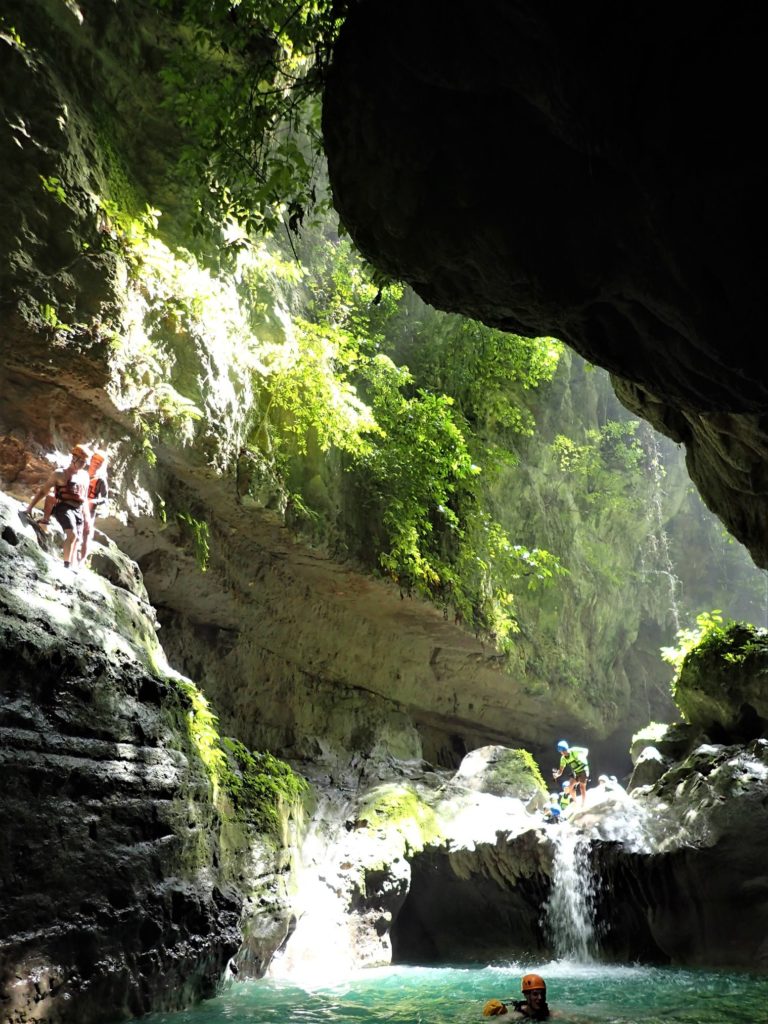
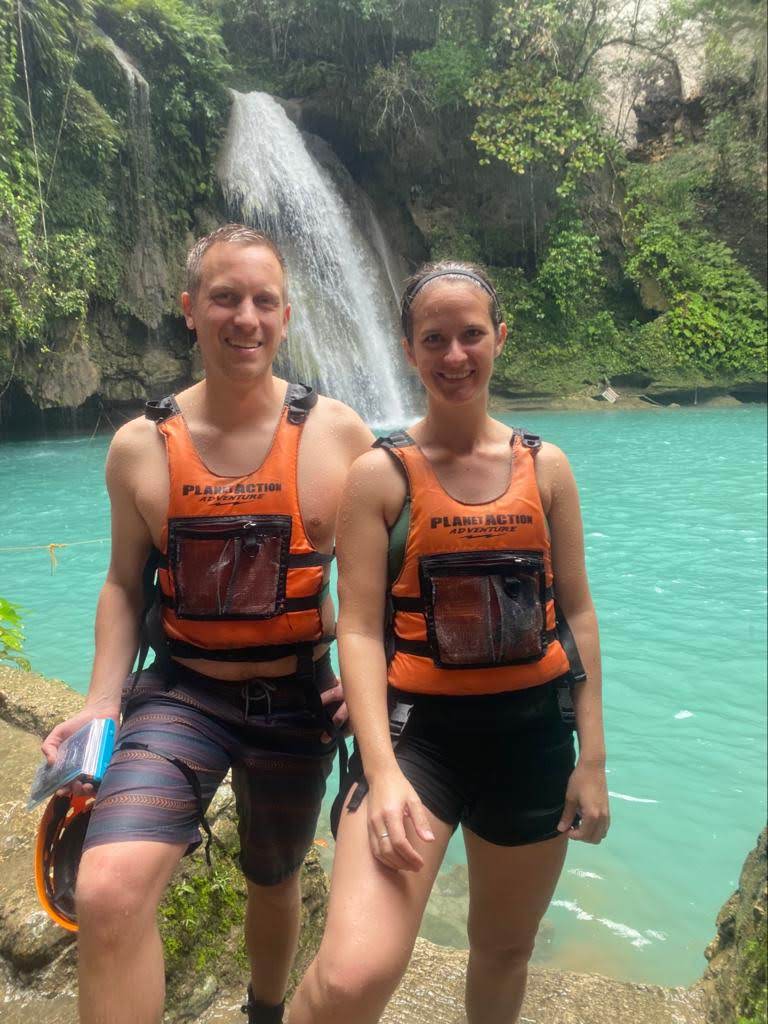
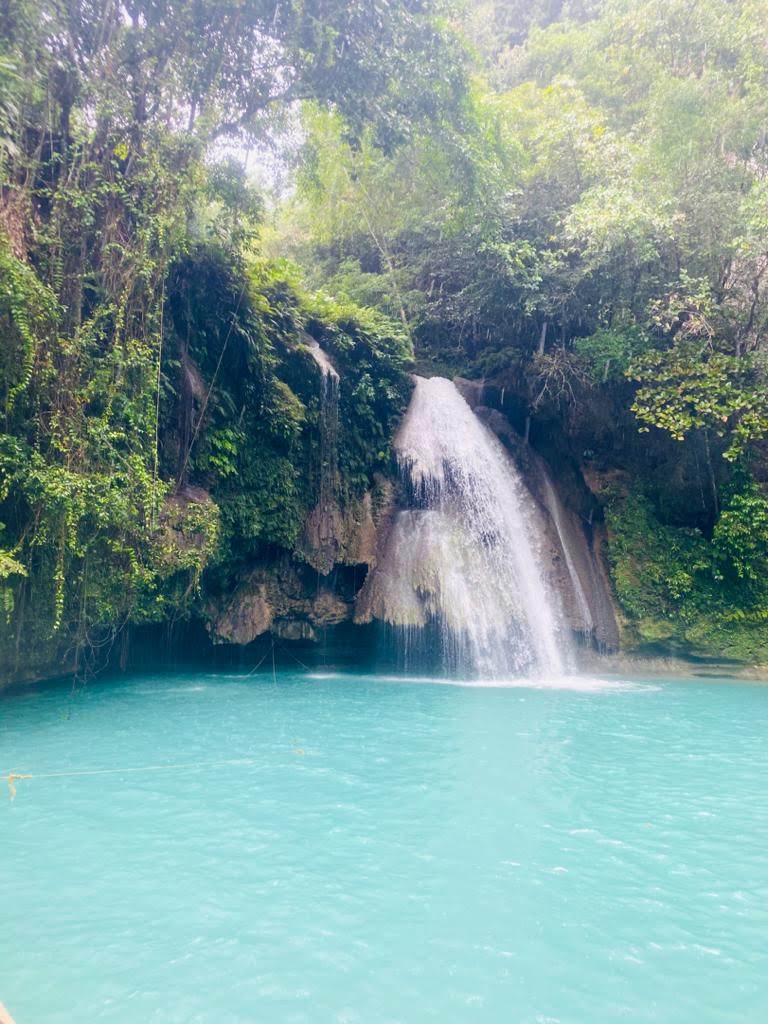
We arrived back in town just in time to watch the sunset over the waterfront on the Tañon Strait while sipping on 60 PHP / $1.20 local beers. We had the intention (as we always do) of staying up late to see what the nightlife had to offer, but decided we were too tired and called it a night after a sleepy dinner. While the main street can be walked in its entirety in 20 minutes, there were a decent amount of cafes and restaurants that offered delicious vegetarian / vegan (!) food and always cheap drinks. Some of our favorites were Smooth Café Moalboal, which had a vegan falafel wrap and fresh juices, and Ven’z Kitchen, which had eggplant sisig – a twist on a local specialty that usually contains pig head and chicken liver; it was so good that we had to return a second time. Moalboal attracts a decent number of tourists from all over the world, which always made for some fun encounters while dining, diving and exploring.
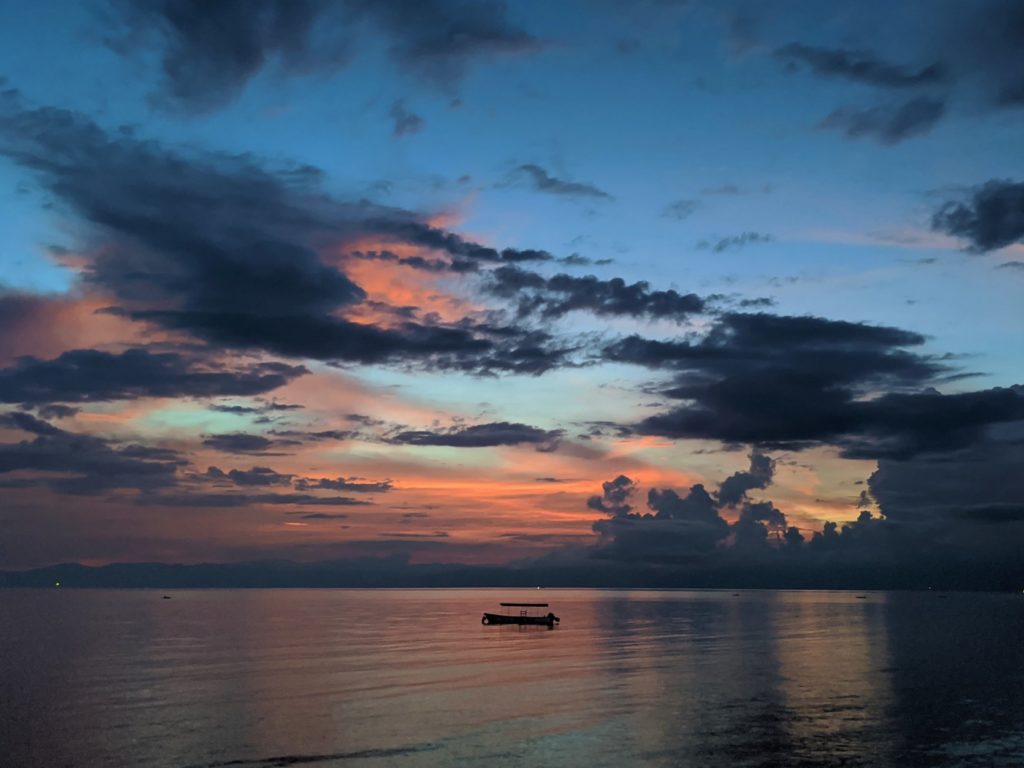
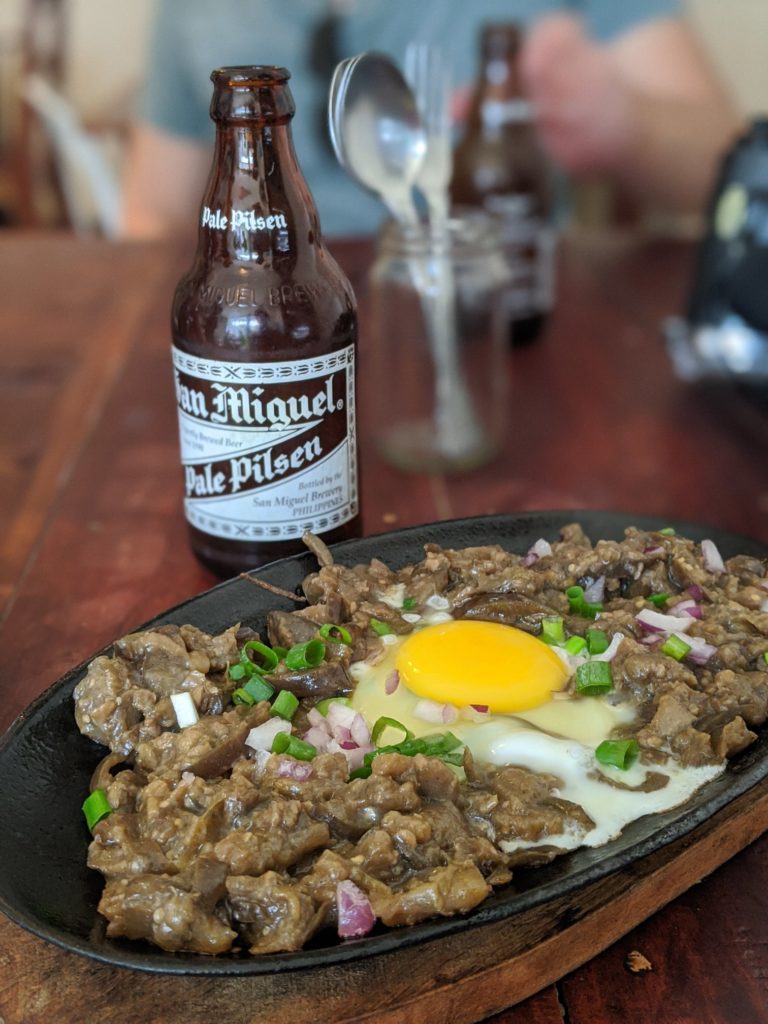
While Moalboal is on the coast, there aren’t many beaches for sunbathing or swimming without being near the busy harbor. So one afternoon, we ventured to the nearby popular White Beach. Based on the recommendation and help of the hotel manager, we secured roundtrip transportation so we wouldn’t be searching for a way back from the secluded beach area. The three of us situated ourselves as comfortably as possible for the 20 minute tuk-tuk ride down bumpy dirt roads. The crystal clear water was incredibly inviting on the hot day, but there wasn’t much around to hide from the sun or to satisfy our eventual hunger pangs, so we didn’t spend too long on the beach. If you plan to visit the beach, keep in mind that there is a small entrance fee for tourists and not a lot of shade unless you pay extra.
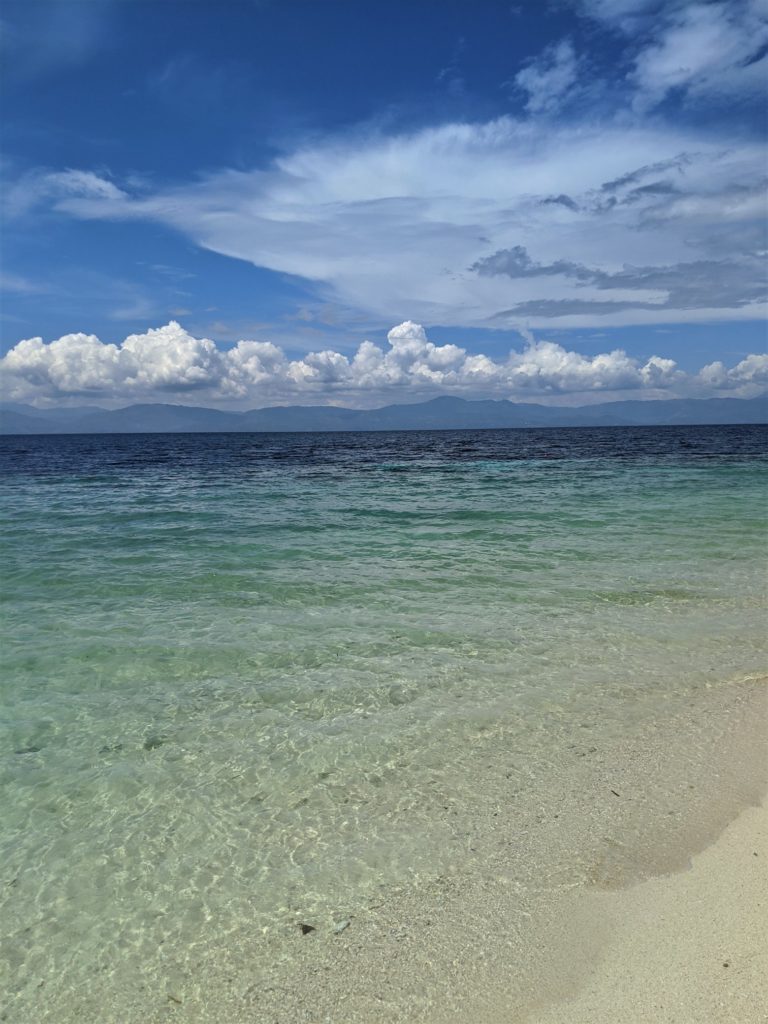
Perhaps the most famous attraction in Moalboal, for divers and snorkelers alike, is the sardine run in which millions of sardines gather on the house reef consistently every day. It was fascinating to watch as they all moved in unison to escape hunting jacks or to clear the way for divers and their bubbles. After diving with the sardines, we understood why it is so popular and would definitely recommend it to anyone visiting the area. Even if you don’t dive, it’s easily accessible as a snorkeler since it’s a short walk out into the ocean from the harbor’s entrance.
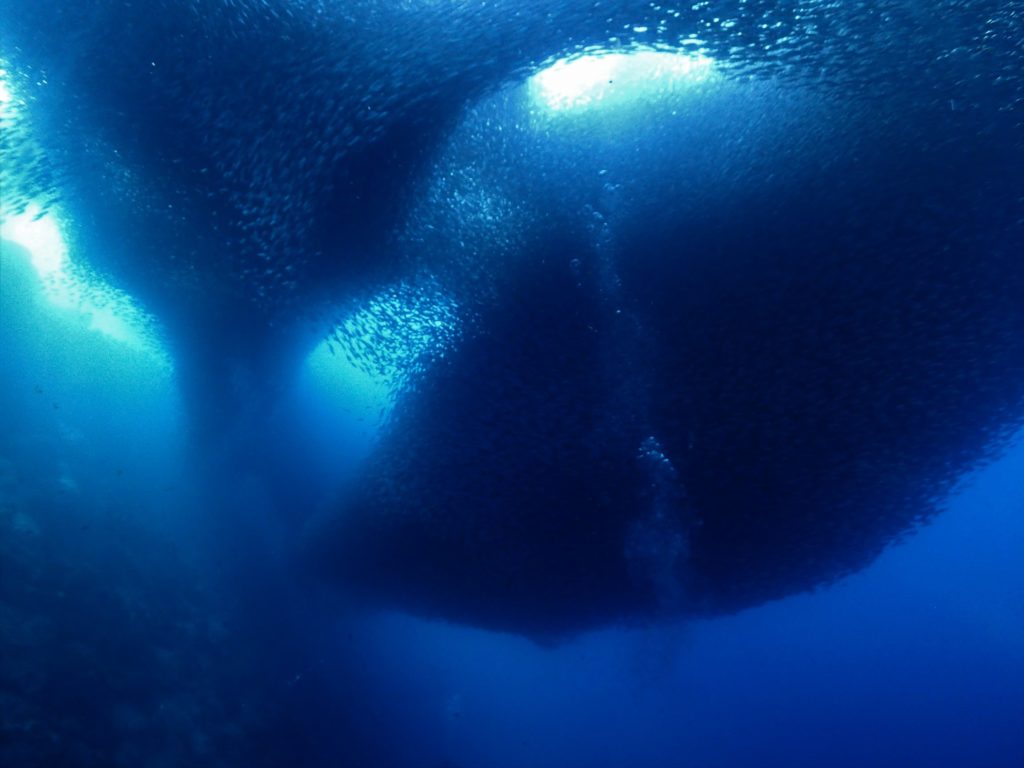
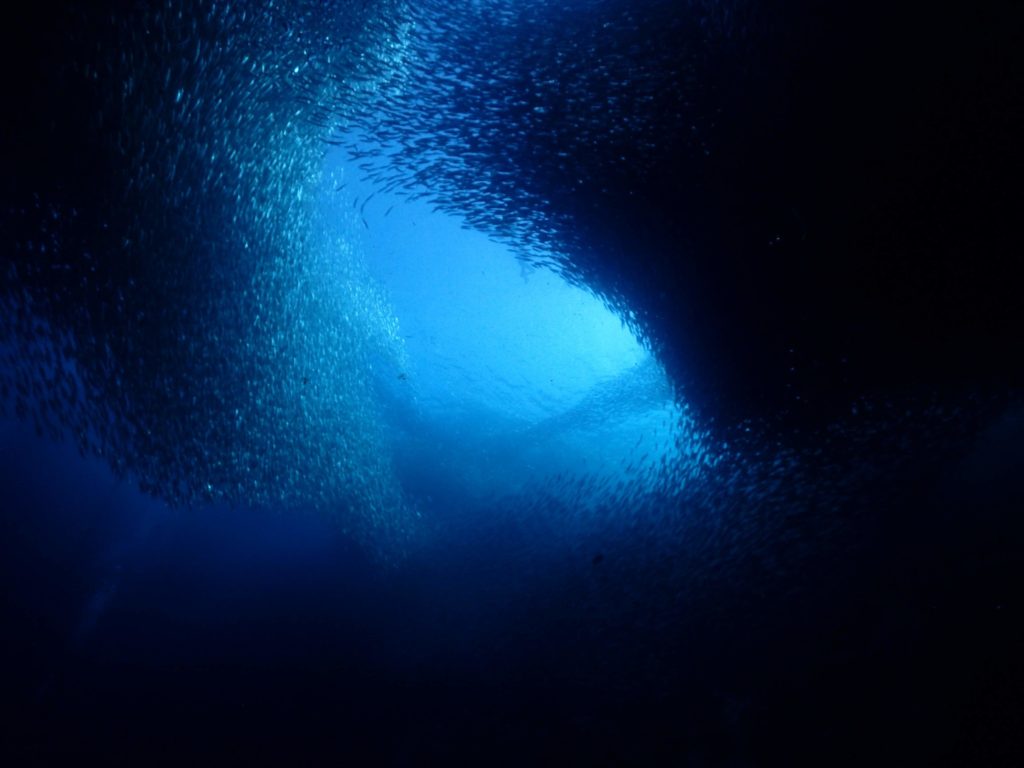
We did a few other dives that were a short boat ride away along the coast and to nearby Pescador Island. The reefs were incredibly healthy and the guides were easily able to point out teeny-tiny nudibranchs, frogfish and bubble coral shrimp. We also spotted octopus (Brittany’s favorite), anemone with clown fish (everyone’s favorite), Christmas tree worms, and a plethora of fish and coral. The diversity and visibility on these nearby dive sites was quite impressive and got us excited for our upcoming dives in Dumaguete. The short boat rides made it easy to get in a lot of dives and still allowed plenty of time on land to relax, eat and meet up with Chloe between and after dives.
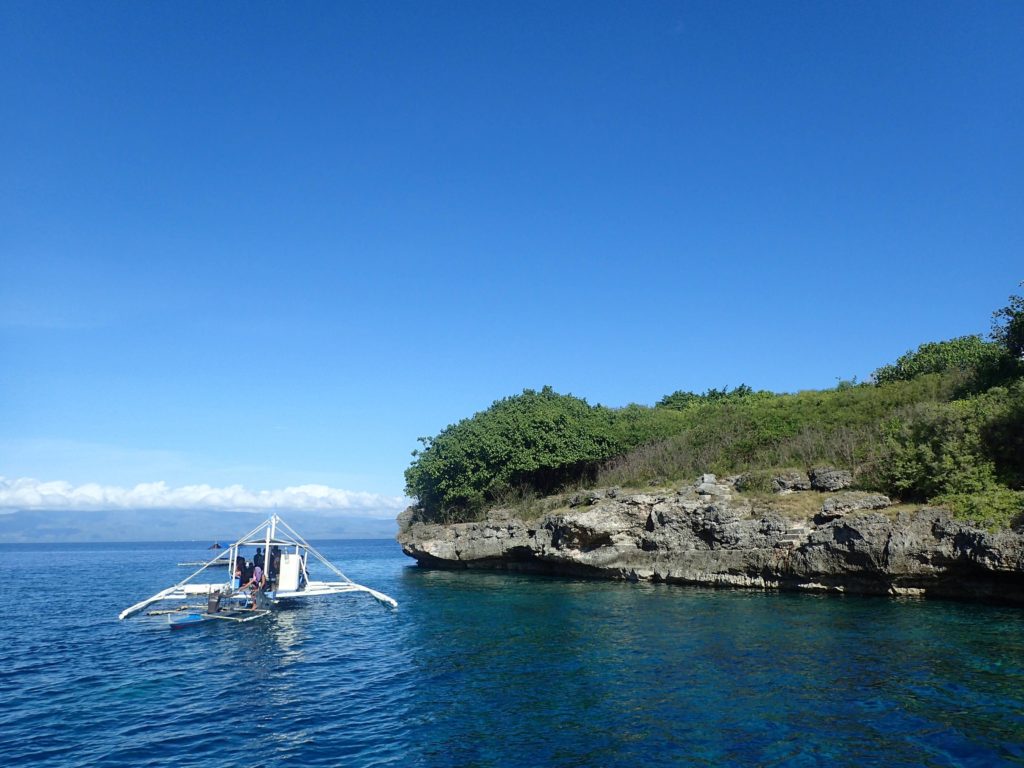
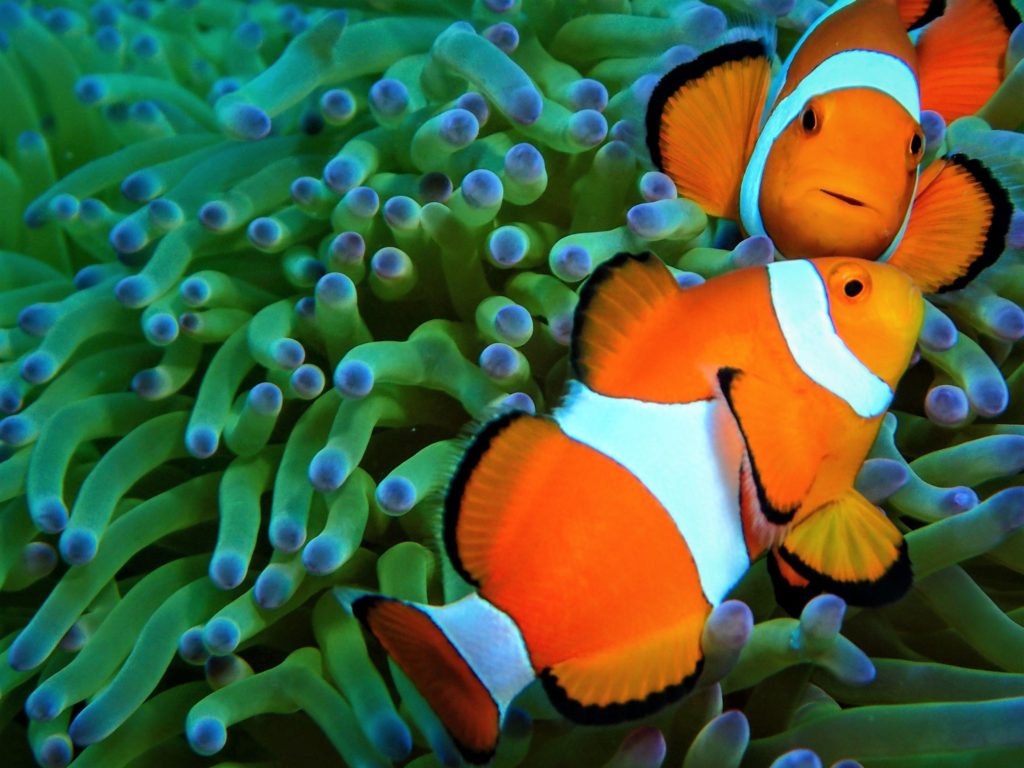
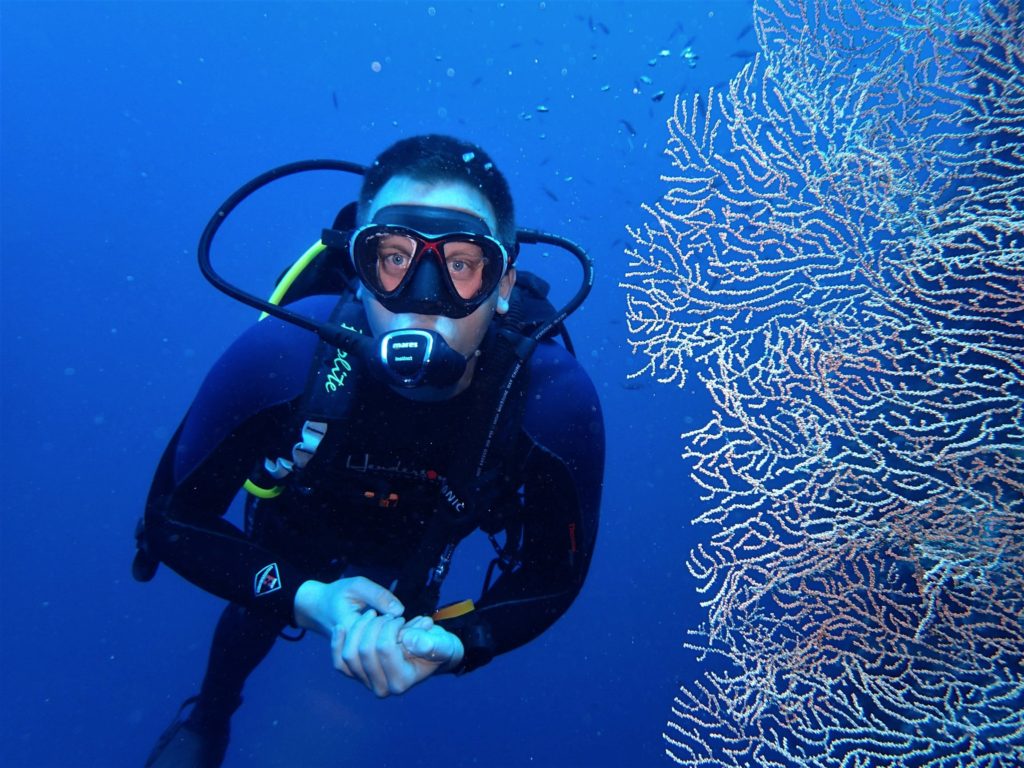
The lowlight of our stay was the last night – loud club music with a pounding, unnecessarily fast bass line (not the good kind) started playing right next to our hotel around 7 PM. We went to bed hopeful that it would end at a reasonable time, but unfortunately it continued until 3 AM, followed by another 30 mins of people noisily dispersing from what we later found out was a club. It made for a tired and somewhat cranky Brico the next day.
Alas we survived and were able to fit in one more dive the next morning, hoping the enriched oxygen gas would help the fatigue, before heading to our next destination. Our journey consisted of a 90 minute van ride along the winding coastal road to the Liloan port on Cebu’s southern tip that would take us across to Dumaguete. Our driver even had time to drop off some birthday party treats for a family member along the way. The ferry terminal was a small, crowded structure so we opted for some chairs outside while Nico went to buy tickets for the next departure, which apparently only had a few spots to spare. When it came time to board, it was a free-for-all and we worked our way to the ferry trying not to let too many people cut in front of us in the haphazard line. There was a thin plank with slats and no railings designated as the boarding platform. We somehow managed to board the ferry with all our scuba gear and luggage – good thing we’re efficient packers! – without falling or losing anything in the water. Once onboard, all the good seats were taken and we found ourselves on the bottom deck in a front row furthest from the exit. Luckily, it was only a short 30 minute trip with views of the neighboring islands out of the foggy / dirty windows. Fortunately we were arriving to the more pampered part of our trip at a luxury resort and spa with a focus on macro diving. Stay tuned for more details on one of our favorite dive trips to date!
